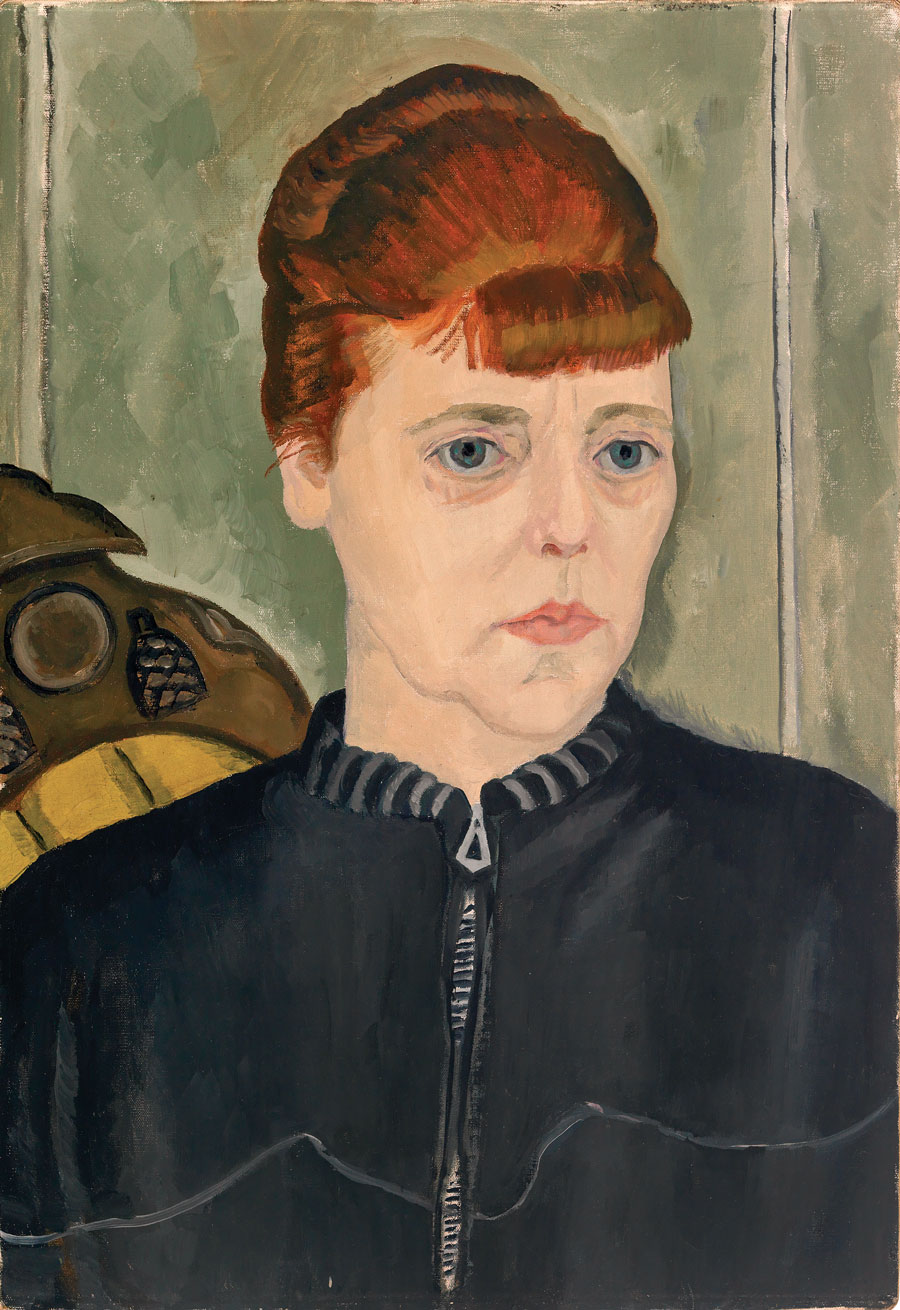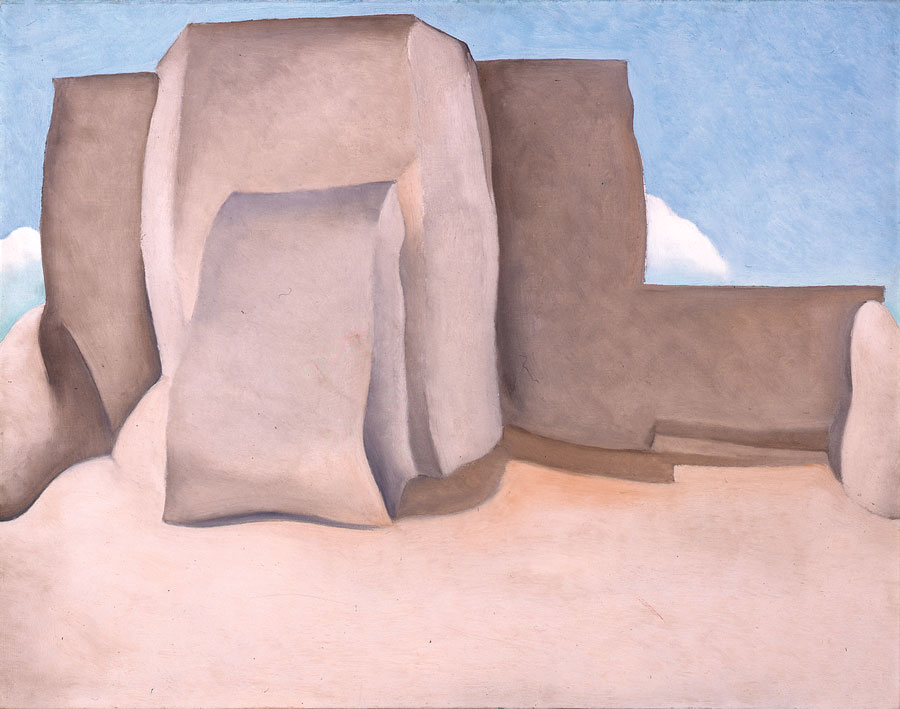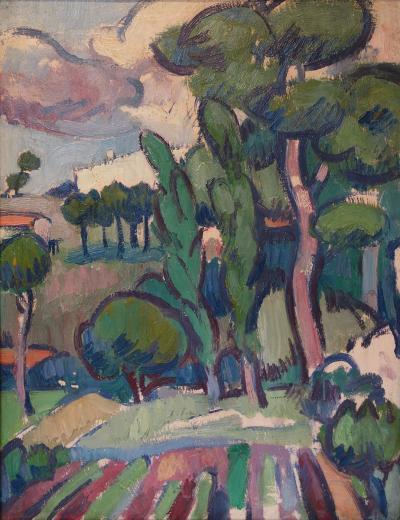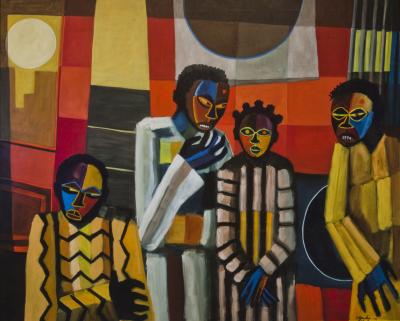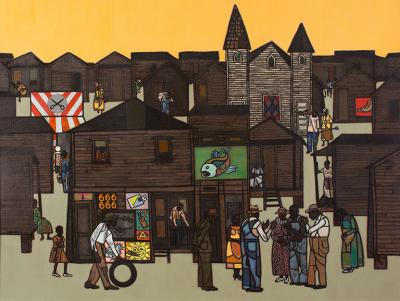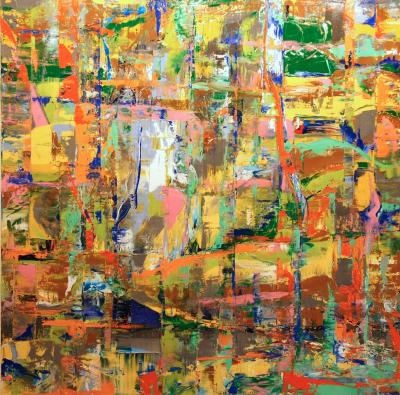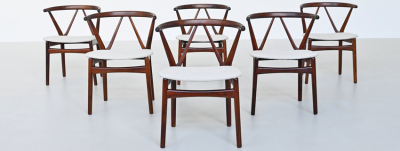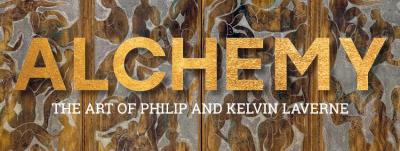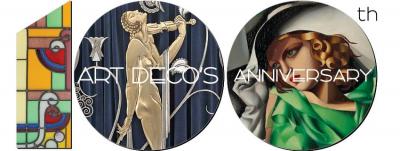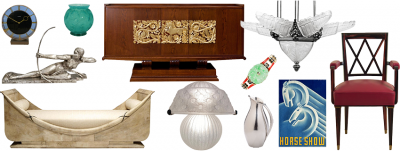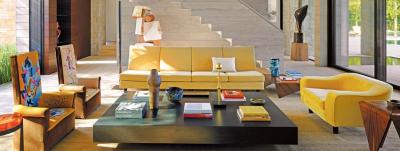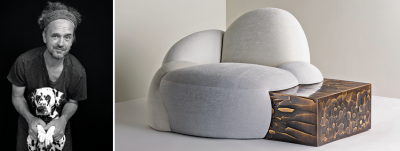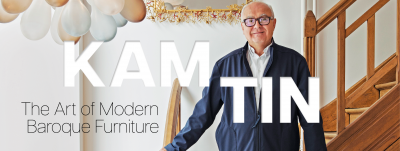O’Keeffe, Stettheimer, Torr, Zorach: Women Modernists in New York
Modernist artists Georgia O’Keeffe (1887–1986), Florine Stettheimer (1871–1944), Helen Torr (1886–1967), and Marguerite Zorach (1887–1968) all lived and worked in New York between about 1910 and 1935. An exhibition at the Norton Museum of Art will examine their art and careers in parallel for the first time. These women engaged with modernism in distinctive, compelling ways, and the nearly sixty-five paintings, works on paper, and textiles in the exhibition will allow visitors to compare their contrasting visions. Stettheimer, Torr, and Zorach are lesser-known, and the show will introduce viewers to their impressive work. The exhibition will also serve to place O’Keeffe’s better-known art in a new context. None of these painters wished to be seen primarily as women artists; instead, they all sought to be recognized as artists. Nevertheless, their identity as women shaped the circumstances under which they worked, the forms their art took, and especially the way their work was interpreted.
These women all moved in the same tightly knit avant-garde art community in New York, which brought them together in numerous ways. Stettheimer and Zorach were close friends, and Zorach drew Stettheimer several times; the latter’s family also owned at least one work by Zorach. Zorach and O’Keeffe attended Stettheimer’s avant-garde salon, and O’Keeffe eventually gave Stettheimer’s eulogy at her funeral. Helen Torr was more isolated, but knew O’Keeffe well, and O’Keeffe admired Torr’s work. Torr also likely knew Stettheimer and Zorach.
These artists came of age during the era of the New Woman, when women increasingly explored the public realm, attended college, entered the labor force, and fought for the right to vote. As part of a larger bohemian dedication to equality, New York’s avant-garde art community ostensibly supported women’s rights in this era. Yet the art world still treated women artists differently from men, especially as the market reorganized itself around a more exclusive commercial gallery and dealer system, which gave fewer opportunities to women.
Marguerite Thompson Zorach was one of the first Americans to master the use of vivid color and abstract form in the manner of Fauvist painters such as Henri Matisse, whose works she had seen in Paris. Like such French contemporaries, Zorach sought to express her emotional response to her subjects rather than representing how they actually looked. In Bathers, the four nudes cavorting in and around a waterfall evoke otherworldly nymphs rather than real women and suggest the dynamism and joy underlying nature. When Zorach exhibited such work in the Armory Show in New York in 1913, it attracted particular critical attention, with one writer commenting on its “extreme modernity.”
Marguerite Thompson Zorach began her career by painting the female nude in fantastical, Fauvist environments, but by the early 1920s was inserting this subject into scenes of contemporary life. Prohibition is one of her most radical works from this period. Through a Cubist fracturing of form, she compressed the pictorial space, bringing the three figures up against the picture plane and confronting the viewer with the strangeness of two clothed men juxtaposed with a nude woman. The role of this woman in the male space of the modern speakeasy is ambiguous in this painting, as indeed a woman’s place was in the world in which Zorach lived.
After Florine Stettheimer moved to New York in 1914, she began to experiment with the modernist styles she had seen in Europe. She developed her own distinctive manner of painting, using expressively elongated figures and vivid, otherworldly color to evoke her subjects’ underlying emotional content. Picnic at Bedford Hills depicts her favorite subject: her family and friends. Stettheimer (under the parasol) and her sisters picnic with the European avant-garde artists Marcel Duchamp (in purple) and Elie Nadelman (in yellow) in Bedford Hills, New York, where the family had gone for the summer. The attenuated, brilliantly colored figures on the vibrant yellow of the grass suggest the picnic’s fantastical atmosphere of heat, leisure, and wit, which contrasts with the solidity of the farmers working in the background.
Portrait of Myself is one of a series of Surrealist portraits that Florine Stettheimer did of herself and her sisters in 1923. The painting’s title, in contrast to the more usual Self Portrait, emphasizes that she is portraying her own personality—her “self.” The figure gazes straight at the viewer under a subtle white-on-white banner that reads “Florine.” Behind her, a red cloak suggests wings that may be what are keeping her afloat. By placing her flying figure near the sun, Stettheimer evoked the Greek myth of Icarus, who arrogantly flew too close to the sun, causing his death. This depiction of herself may allude to the dangers she saw in her own growing fame. Yet the otherworldly realm of the painting also suggests the private world in which Stettheimer preferred to work and live.
In her mature works, Helen Torr often explored the distinction between geometric, human-made structures and organic nature. She was fascinated by Alfred Stieglitz’s series of photographs of clouds, and in her paintings used the subject, like him, to explore expressive form for its own sake, suggesting a roiling energy all her own. In Corrugated Building, these vigorous clouds contrast with the still verticality of the abstracted industrial building. The close resemblance between such works by Torr and contemporaneous paintings by her husband, Arthur Dove, illustrates the shared modernist aesthetic that the two were developing in these years.
Late in her career, Helen Torr embarked on a series of self-portraits, a subject she had not previously explored. The two extant examples will be seen together in this exhibition for the first time. Like the earlier Self Portrait (1934–35; Sheldon Museum of Art, University of Nebraska-Lincoln), I poignantly conveys the artist’s simultaneous sadness and strength, as she struggled to maintain confidence in her work in the face of ill health and condescending treatment by most of the avant-garde art world. Soon after she created these haunting works, Torr stopped painting entirely in order to take care of her ailing husband.
Perhaps Georgia O’Keeffe’s most in-depth investigation of the floral subject matter for which she is most famous occurred in her series of six paintings of a jack-in-the-pulpit, the last five of which will be in this exhibition. In these works, O’Keeffe gradually abstracted the plant down to its essence. With the club-shaped spadix extending up through the parted petals, all these paintings have resonances of both male and female genitalia and the sex act itself, and easily conform to her dealer and husband Alfred Stieglitz’s promotion of her work in sexual terms. O’Keeffe was conflicted about this interpretation because she recognized that while it had made her fame as a leading modernist, it robbed her work of its complexity. The jack-in-the-pulpit series demonstrates how she used flowers to address the powerful energy underlying nature and fundamental modernist questions of reality and abstraction, presence and absence, and figure and ground.

- Georgia O’Keeffe (1887–1986)
City Night, 1926
Oil on canvas, 48 x 30 inches
Lent by The Minneapolis Institute of Art Gift of funds from the Regis Corporation, Mr. and Mrs. W. John Driscoll, the Beim Foundation, the Larsen Fund, and by public subscription Photo Bridgeman Images/ © 2016 Georgia O’Keeffe Museum/ Artists Rights Society (ARS), New York
In 1925, Georgia O’Keeffe moved to the thirtieth floor of the Shelton Hotel, which inspired her to paint the modernizing city and its new skyscrapers. In City Night, the perspective looking through the towering black structures to the white skyscraper beyond draws the eye up, highlighting the buildings’ impressive loftiness. As in her flower paintings, the artist used unusual viewpoints and scale juxtapositions in these works, surprising viewers into looking at her subject anew. Here, the diminutive moon is completely dwarfed by the huge buildings soaring above it. O’Keeffe’s dealer and husband Alfred Stieglitz disapproved of these paintings because they did not conform to his promotion of her work as an intuitive expression of female sexuality. Other critics made this same conclusion. In the New York Sun, Henry McBride wrote: “The painting is intellectual rather than emotional.” O’Keeffe thanked McBride, saying that she was “pleased to have the emotional faucet turned off.” 
In the summer of 1929, Georgia O’Keeffe went to New Mexico rather than accompanying her husband Alfred Stieglitz to his family’s home on Lake George. In works such as Ranchos Church No. 1 she addressed the distinctive relationship between buildings and the landscape in the Southwest. By depicting the mission of Saint Francis of Assisi in Ranchos de Taos from the back, O’Keeffe emphasized its sculptural form rather than its function as architecture. As she had in her views of New York buildings, she streamlined the church in order to monumentalize it. However, the structure seems to merge into the land rather than rising above it, reflecting the different relationship between human beings and nature in this place. The Southwest became O’Keeffe’s great subject in the later part of her career. Although she would remain married to Stieglitz until his death in 1946, from this time on she prioritized her art above all else.
Examining the contemporary reception of O’Keeffe’s, Stettheimer’s, Torr’s, and Zorach’s work reveals that each suffered from having her art interpreted as an expression of her intrinsic femininity, rather than her own artistic voice. Florine Stettheimer’s work was easy to dismiss because she rarely exhibited it publically, refused to sell it, and used delicate forms and personal subjects that seemed archetypally feminine. Helen Torr and her husband Arthur Dove worked alongside one another to develop their modernism, but critics described her work as imitating his. Marguerite Zorach’s reputation suffered when she began creating work in the seemingly feminine media of embroidery and batik because she found the demands of oil painting difficult to balance with the responsibilities of motherhood. Georgia O’Keeffe was the most critically and commercially successful of the four, but her art was consistently marketed and interpreted as embodying general female sexuality rather than her own distinct aesthetic vision. These modernists created work that was especially open to such reductive understandings since it used modes of abstraction, leaving its meaning open-ended. Such interpretations purely in terms of gender were also particularly frustrating for these artists since, as modernists, they sought to express their complex individuality in their art.
Exposing the inadequacies of this initial understanding of O’Keeffe’s, Stettheimer’s, Torr’s, and Zorach’s work is crucial because it still influences how we look at their art a century later. Seeing these four women’s work in this new context reveals the factors that have limited appreciation not only of their art, but also of that of American women modernists in general. This project thus makes possible a greater comprehension of women’s key role in modernism.
O’Keeffe, Stettheimer, Torr, Zorach: Women Modernists in New York, curated by Ellen E. Roberts, is on view at the Norton Museum of Art, February 18–May 15, 2016, and the Portland Museum of Art, Maine, June 23–September 18, 2016. This exhibition is organized by the Norton Museum of Art, West Palm Beach, Florida, with the support of the Portland Museum of Art, Maine. It is made possible through the generosity of the Henry Luce Foundation, Anne Berkley Smith, and Wells Fargo Private Bank, as well as an award from the National Endowment for the Arts. With additional support provided by the Mr. and Mrs. Hamish Maxwell Exhibition Endowment and the Priscilla and John Richman Endowment for American Art. For more information visit www.norton.org or call 561.832.5196.

Ellen E. Roberts is the Harold and Anne Berkley Smith Curator of American Art at the Norton Museum of Art, West Palm Beach, Florida.
This article was originally published in the 16th Anniversary (Spring 2016) issue of Antiques & Fine Art magazine, a digitized version of which is available on www.afamag.com. Antiques & Fine Art and afamag are affiliated with InCollect.





















